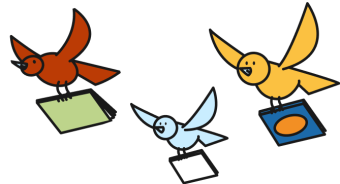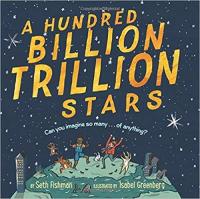
Earth is surrounded by stars of which the sun is only one. Earth is blue “because it is covered by 370,000,000.000,000,000,000 gallons of water.” It has trillions of trees and millions of cities …. but “only one of YOU…” This imaginative presentation is enjoyable to read and may well encourage closer observation of what is all around.
A Hundred Billion Trillion Stars

The Earth started long ago with a Big Bang and continues to evolve and change. Its history is presented humorously yet factually in a tour guided by a small, expressive, and charming groundhog. The collaboration between authors (one a university geology professor, the other an award-winning artist) has created an accessible and engaging look at Earth’s history.
Older Than Dirt: A Wild but True History of Earth

Margaret loved to solve all kinds of problems coming up with original ideas. She wondered why more girls didn’t grow up to be doctors or scientists. So, she studied hard and finally convinced NASA to use her software programs to get astronauts to the moon and back. Cartoon illustrations complement the conversational text. Additional information about Margaret, additional resources and photos of Margaret conclude this empowering sketch.
Margaret and the Moon: How Margaret Hamilton Saved the First Lunar Landing

Don t miss the adventures of Chuck and David, two boys who travel to the alien planet Basidium in their homemade spaceship. This timeless series (in print since the 1950s) is a classic that is sure to be read over and over again.
The Wonderful Flight to the Mushroom Planet
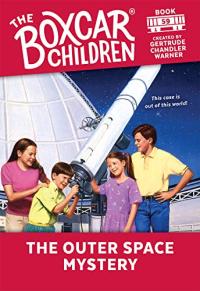
The Boxcar Children — Jessie, Henry, Violet and Benny — are excited to attend a young astronomers’ convention! But when a student and his important discovery go missing, will the children be able to help?
The Outer Space Mystery (Boxcar Children Mysteries)
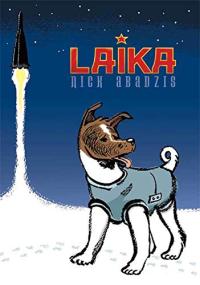
Laika was the abandoned puppy destined to become Earth’s first space traveler. This is her journey. The author masterfully blends a graphic novel format with fiction and fact in the intertwined stories of three compelling lives. Along with Laika, there is Korolev, once a political prisoner, now a driven engineer at the top of the Soviet space program, and Yelena, the lab technician responsible for Laika’s health and life. An extensive bibliography of sources is appended.
Laika

Caroline Herchel, born in 1750, enjoyed looking at the night sky with her father. She would become the first woman to receive the Gold Medal of England’s Royal Astronomical Society. Caroline’s own words punctuate the lucid narrative. Expressive watercolor and line illustrations effectively evoke the time and place. A timeline and glossary conclude the book.
Caroline’s Comets: A True Story
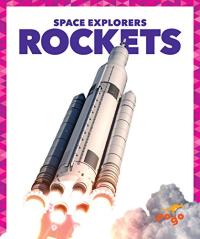
In this Space Explorers series, topics of interest to younger readers are introduced in clear color photographs and accessible, logically presented text. “Activities and Tools” to extend each subject are included in an index, along with suggestions for finding additional information.
Rockets
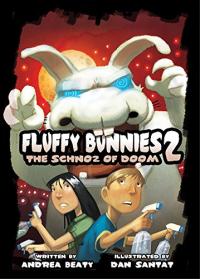
Space bunnies are back for a second installment. Can twins Joules and Kevin save their school from the ferocious fur balls? Fiercely funny, this is sure to please young readers.
Fluffy Bunnies 2: The Schnoz of Doom
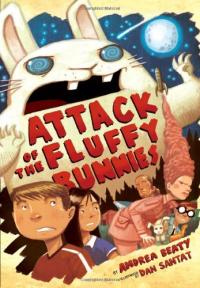
With humorous allusions to a candy universe and over-the-top puns, this laugh out loud funny novel follows twins as they defeat killer space bunnies. Heavily illustrated and with a light tone, this should appeal to even the most reluctant reader.
Attack of the Fluffy Bunnies
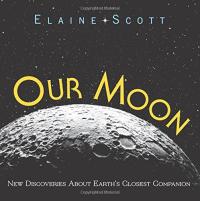
People have always been fascinated by the moon. Since Galileo, humans have walked on the moon, created stronger telescopes and more. The historical and current examination of Earth’s closest neighbor is presented in a generously illustrated, very handsome, and comprehensible package.
Our Moon: New Discoveries About Earth’s Closest Companion
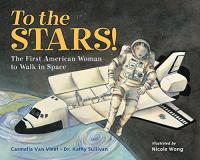
Kathy Sullivan followed her dreams regardless of what other girls did. She learned to pilot a plane as a teenager and as an adult, an astronaut and the first woman to walk in space. Her early experiences are juxtaposed to her work as an astronaut on alternating spreads seen in attractive illustrations and a crisp text. A note from Sullivan (coauthor of the book) as well as brief sketches of other women astronauts concludes this fascinating book.
To the Stars: The First American Woman to Walk in Space

This book tells the greatest space robot adventure of all time through the eyes — and heart — of Steven Squyres, professor of astronomy at Cornell University and lead scientist on the mission. This suspenseful page-turner captures the hair-raising human emotions felt during the adventures with two tough rovers.
The Mighty Mars Rovers: The Incredible Adventures of Spirit and Opportunity (Scientists in the Field series)
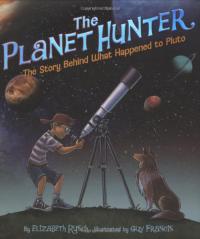
Why the once-planet Pluto was demoted to a lesser planetary status is explained in readable text and engaging illustrations.
The Planet Hunter: The Story Behind What Happened to Pluto

A blue alien arrives on a farm, “Blip, stop! Zot, wazzzzdot?” he wonders. Young readers will readily recognize the silhouette of a pig but will exclaim with the alien when the page turns. Lively illustrations and clipped language leaps and jumps across the pages as the exploration continues.
Waz Dot?
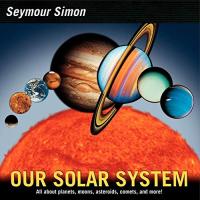
Spectacular photographs (primarily from NASA) and a readable, up-to-date text present current information about our solar system. Moreover, the author’s interest in science and this topic are effectively shared and may inspire readers.
Our Solar System

A handsome feline named Mr. Wuffles is quite fussy about his toys. But he certainly enjoys a small roundish object he comes across unexpectedly. Surprises abound when readers see what that object holds and how — and from whom — the aliens contained in it find help. The three-time Caldecott medalist presents another fresh, nearly wordless tale.
Mr. Wuffles!
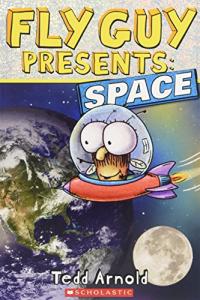
Buzz and his pet fly, Fly Guy, visit a space museum for a brief introduction to stars, planets and related concepts. Photographs and funny illustrations combine with easy-to- read language for a quick, accessible, informative trip shared by old friends.
Fly Guy Presents Space
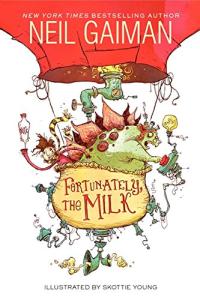
The children’s mother is away but finally they separate their dad from his newspaper to go out for milk. When he returns with it, father regales the narrator and his sister with his adventures that start when he goes out for milk and is taken by aliens but always saves the milk! Droll line illustration combines with exaggeration for a very funny tall tale.
Fortunately, the Milk
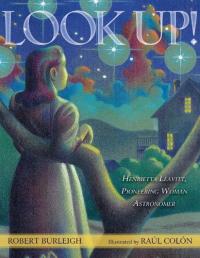
Meet Henrietta Leavitt, a 19th century pioneer for women in science. From careful observations, Leavitt discovered that the brightness of a star determines its distance from Earth and her work helped us better understand the vastness of the universe. Warm colored pencil and watercolor illustrations by Colon create a contemplative mood. Back matter includes quotes about stars, a glossary, information about other female astronomers, and more.
Look Up! Henrietta Leavitt, Pioneering Woman Astronomer
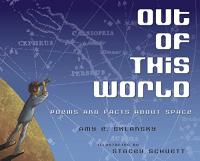
Poems combine with information and evocative illustrations to create a sense of wonder about space and space-related topics. Beginning with a countdown (“T-minus:/10/9/8…./Spaceship soaring!”) and concluding with a child wondering about “My Place” in the universe, this intriguing collection is sure to delight readers.
Out of this World: Poems and Facts about Space
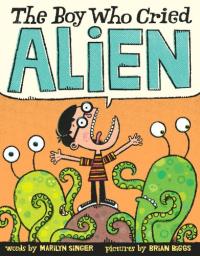
Larry, like the boy who cried wolf, is known for his prevarication. He winds up a hero, however, when he tells the truth about space aliens. Illustrations in comic book format and jazzy rhyming text and coded alien-speak are sure to tickle funny bones.
The Boy Who Cried Alien
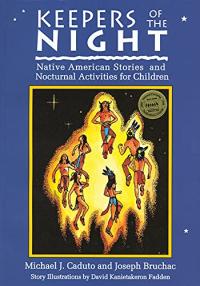
In Native cultures, the night is a crucial part of the Great Circle and balance in the universe. In the tradition of the best-selling Keepers of the Earth and Keepers of the Animals, this collection offers unique ideas about understanding the natural world by looking at it through a nocturnal lens. Resources and activities include legends and myths, puppet shows, stargazing guides, campfire topics, and traditional dances.
Keepers of the Night: Native American Stories and Nocturnal Activities for Children

A chipmunk looks skyward and wonders about the twinkling stars before his imaginative adventure and travel to the moon. Stunning watercolors extend the familiar rhyme.
